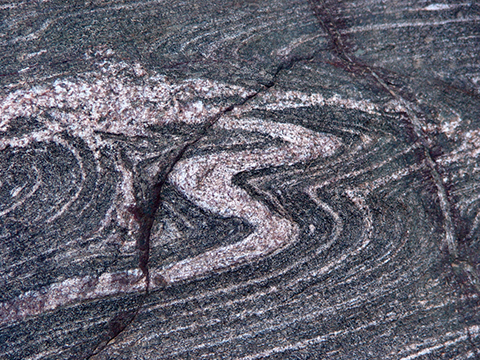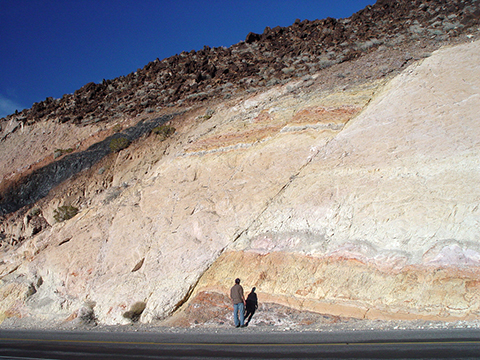Prelude
Along with our understanding of igneous and sedimentary rocks, knowledge of metamorphic rocks and geologic structures allows us to fully interpret the geologic history of any area. The word metamorphic is derived from the Greek and means "of changed form", and rocks can experience change due to heat, pressure and/or fluids. Metamorphism is the process that transforms a pre-existing rock (protolith or parent rock) into a totally new (metamorphic) rock. Many rock units are folded-up like a crumpled rug, broken by faults, or smeared out into shear zones. Metamorphic rocks and geologic structures (like folds and faults) commonly form at depth within the Earth, and we see the results metamorphism only after the rocks are uplifted and exposed at the surface. By observing these features at the Earth's surface, we can infer the nature and origin of past tectonic forces that are typically associated with mountain-building events.
|
Figure 7-1. Metamorphic rocks and geologic structures in the field. The folded 1730 Ma Trinity Gneiss exposed along Trinity Creek (Colorado River mile 91.5) in the Grand Canyon (left). Remember to click on the highlighted images to see larger versions. |
|
What Will You Do Today?
A. Metamorphism & Metamorphic Rocks - Identify different types of metamorphic rocks, and interpret the protolith and metamorphic conditions they represent
B. Geologic Structures - Learn your faults from your folds
C. Metamorphic Rocks & Structures in Geologic Maps - Read and interpret structures and metamorphic units from several different geologic maps
D. Geology of Gneiss Canyon - Interpret a sequence diagram with a fault, fold, metamorphic rocks, and more!


